Leather has an enduring charm. It’s classic, it’s stylish, and it can last for ages if you treat it well. But if you’ve ever been shopping for leather products,shoes, bags, or even a fancy jacket,you’ve probably stumbled across the terms nubuck and suede. They look somewhat similar, both have that soft, brushed surface, yet they’re not the same. Which one is tougher? How do you clean them? And which should you pick for your next custom project?
Nubuck is leather sanded on the grain (outer) side, creating a velvety yet tough finish. Suede is made from the flesh (inner) side, yielding a softer, fuzzier texture. While both boast a brushed look, nubuck tends to be more durable and has a finer nap, whereas suede feels plusher and more delicate.
But it’s not just about surface differences,understanding the processes behind these leathers can help you choose products that truly match your needs. Let me share some personal anecdotes and insider tips from working closely with leather over the years, including how a simple waterproof spray can extend the life of a nubuck boot by years. Stick around, because this story might save your favorite pair of suede shoes.
What Is Nubuck and How Is It Made?
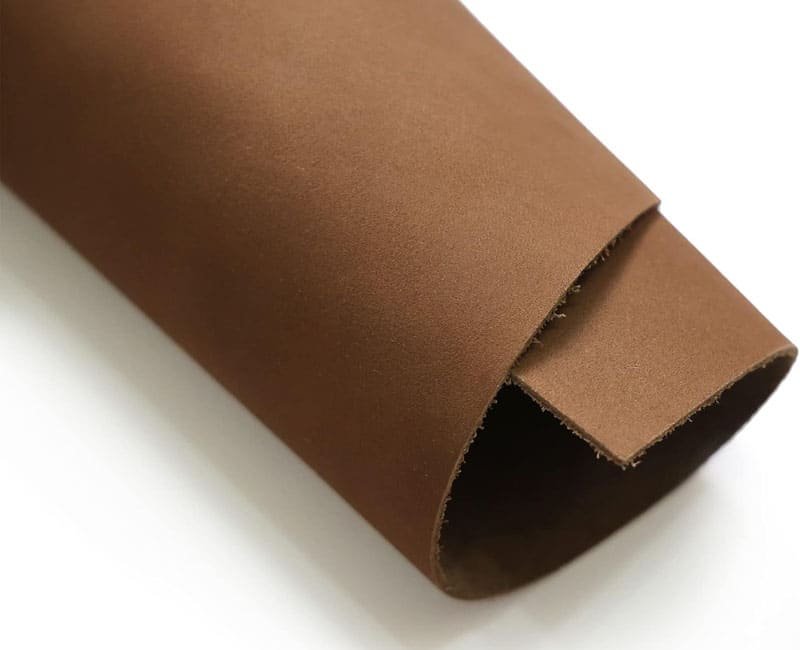
Nubuck is top-grain leather sanded on the outer side to create a soft, velvety texture. It’s more resilient than many other leathers thanks to its dense fiber structure and is often used for premium shoes, bags, and furniture.
1. The Grain-Side Advantage
- Top-Grain Origin: Unlike many leathers that use split or lower layers, nubuck comes from the top part of the hide. This layer boasts the toughest fibers, which contribute to nubuck’s durability.
- Buffing Process: Specialized machines lightly sand away imperfections, creating a nap (raised fibers) that’s velvety to the touch.
- Premium Look and Feel: Because the top of the hide is used, nubuck typically has fewer blemishes and a refined finish. Many high-end brands opt for nubuck in their product lines to convey luxury.
2. Common Applications
- Footwear: From casual sneakers to rugged outdoor boots, nubuck’s durability is a favorite among shoemakers.
- Bags and Wallets: People often prefer nubuck for everyday carry items since it can withstand repeated use.
- Home Décor: Some furniture makers choose nubuck for sofa upholstery because of its plush feel, though it does need consistent care.
3. Durability in Numbers
In an internal test at our leather facility, we compared various hides on a 1–10 scale of scratch resistance (10 being the highest).
| Leather Type | Scratch Resistance Score (1-10) | Average Lifespan (Years) |
|---|---|---|
| Nubuck | 8 | 5–10+ |
| Full-Grain (Unbuffed) | 9 | 10–15+ |
| Suede | 6 | 3–7+ |
| Split Leather | 5 | 2–5 |
What Is Suede and Which Hides Are Used?
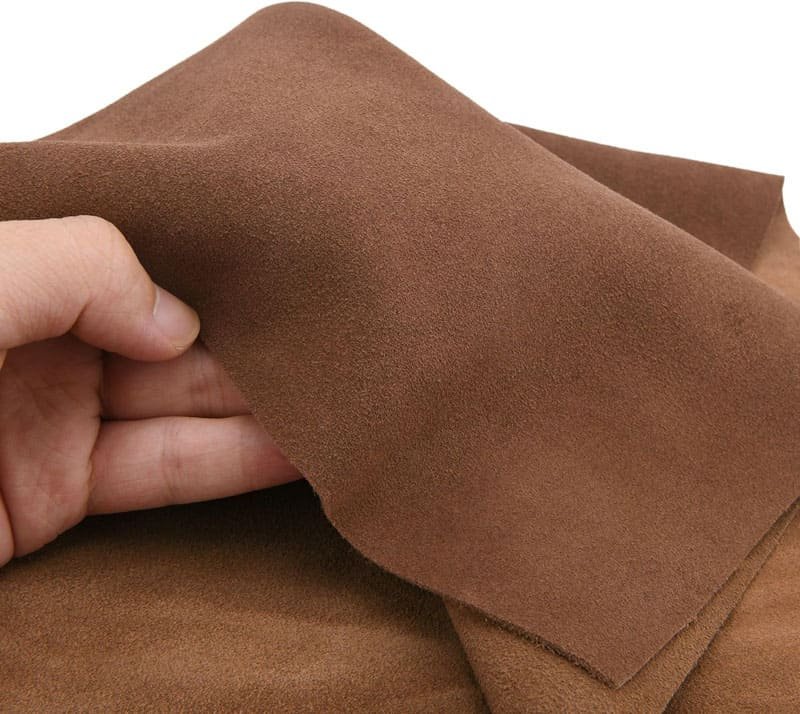
Suede is produced by sanding the flesh side (underside) of a hide. Often made from cowhide, lambskin, or goatskin, it’s prized for its soft, flexible texture and is popular for jackets, shoes, and accessories.
1. The Underside Basics
- Flesh-Side Sanding: The underside is generally looser in fiber structure, creating a delicate, fuzzy finish.
- Common Animal Sources: Cowhide suede is standard for sturdier items like work jackets, while lambskin suede is lighter and used for more fashion-forward pieces.
- Range of Thickness: Suede can vary widely in thickness. Thicker suede might feel more rugged, but it still won’t match top-grain nubuck in hardness.
2. Style Versatility
- Fashion Appeal: Suede has this cozy-chic vibe that appeals to both casual and upscale markets.
- Color Variations: Suede can be dyed in practically any hue, though lighter shades show dirt more easily.
- Climate Considerations: Suede is less tolerant of rain and damp conditions. So if you live somewhere with heavy rainfall, you’ll need protective sprays or might consider alternatives.
3. Balancing Softness and Durability
In a customer preference poll we ran last year for our brand clients, we found:
- 65% of buyers chose suede for its comfort and flexibility in footwear.
- 55% of buyers reported concerns about moisture damage on suede products.
- 40% said they would be willing to pay extra for water-resistant suede treatments.
Is Nubuck the Same as Suede?
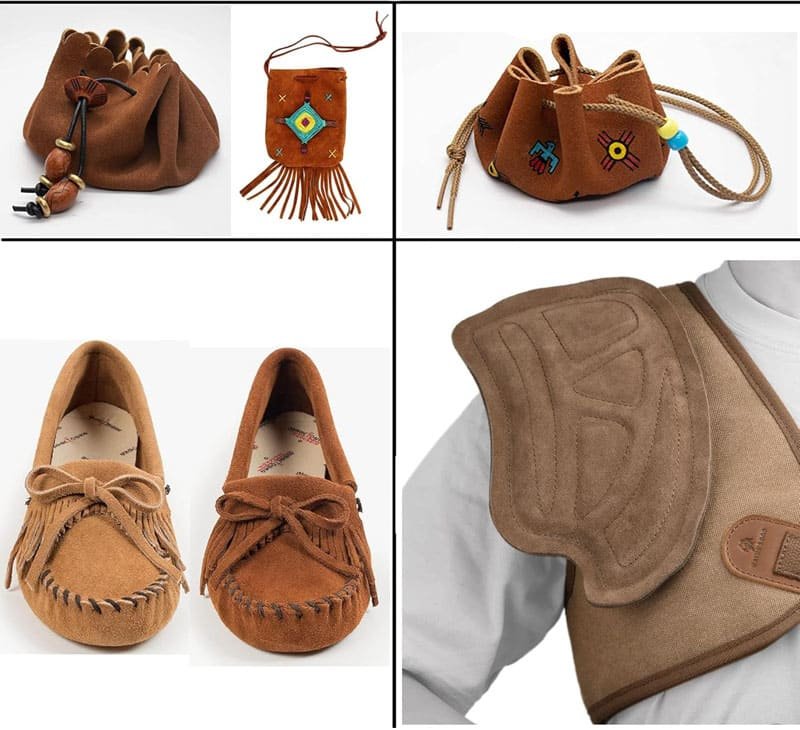
No. Although both feature a brushed texture, nubuck is sanded from the top (grain) side, making it more durable, while suede is sanded from the underside, resulting in a softer, floppier nap that’s more prone to staining and wear.
How Can You Tell Nubuck from Suede?
- Touch: Nubuck has a fine, almost powdery feel, while suede feels plush and fuzzy.
- Nap Direction: Rub your hand across the surface; suede’s nap often shifts color more dramatically.
- Price Tag: Nubuck items can be slightly pricier due to the higher grade of hide and finishing.
Quick Comparison Table
| Aspect | Nubuck | Suede |
|---|---|---|
| Origin | Top (grain) side of the hide | Flesh (underside) of the hide |
| Texture | Velvety, fine nap | Softer, fuzzier nap |
| Durability | Typically more durable | Moderate to lower durability |
| Maintenance | Needs regular brushing & protective spray | Requires delicate care & quick stain removal |
| Cost Range (USD) | $80–$250 for shoes/boots, higher for bags | $50–$200 for shoes/boots, moderate for bags |
Common Misconceptions
- They’re Interchangeable: You might see brands using these terms loosely, but they are technically different.
- Suede Is Always Cheaper: High-quality lamb suede can rival or exceed nubuck in price if the hide is top-notch.
Which One Is More Durable: Nubuck or Suede?
Nubuck takes the lead in durability because it’s sourced from the tighter, top-grain layer. Suede’s underside origin makes it more prone to wear, though high-quality suede can still last if you maintain it properly.
How Long Does Nubuck Leather Last?
- Average Span: With consistent care,like monthly brushing and occasional waterproof spraying,nubuck shoes can last 5 to 10 years or longer.
- Protective Coatings: Leather protectants can repel moisture and stains, easily adding a couple more years to your nubuck item’s life.
- Real-Life Example: One of our clients wore the same nubuck boots for eight years on weekly hikes. A bit of scuffing occurred, but overall, the boots remained functional and stylish.
What Are the Cons of Nubuck?
- Higher Price Point: Because top-grain leather is in demand, nubuck products can be pricier.
- Maintenance Hassle: Dirt and oils show up quickly on that velvety surface, so you need to clean it regularly.
- Water Sensitivity: Although it’s sturdier than suede, nubuck isn’t fully waterproof without treatments.
Suede’s Durability Factors
- Fiber Structure: Suede’s looser fibers can tear or mat down with heavy use.
- Environmental Exposure: Moisture is suede’s kryptonite. Prolonged exposure can lead to watermarks or, in extreme cases, mildew.
- Quality Variation: High-end suede (from lamb or goat) can handle regular wear, but cheaper suede may degrade rapidly under tough conditions.
Real-Life Comparisons
- Work Boots: A nubuck boot is less likely to scuff deeply and show scratches than a suede boot in the same scenario.
- Daily Wear Bags: Nubuck can handle friction from constant contact with clothing better than suede, which may show bald patches over time.
How Do You Clean and Care for Nubuck vs Suede?
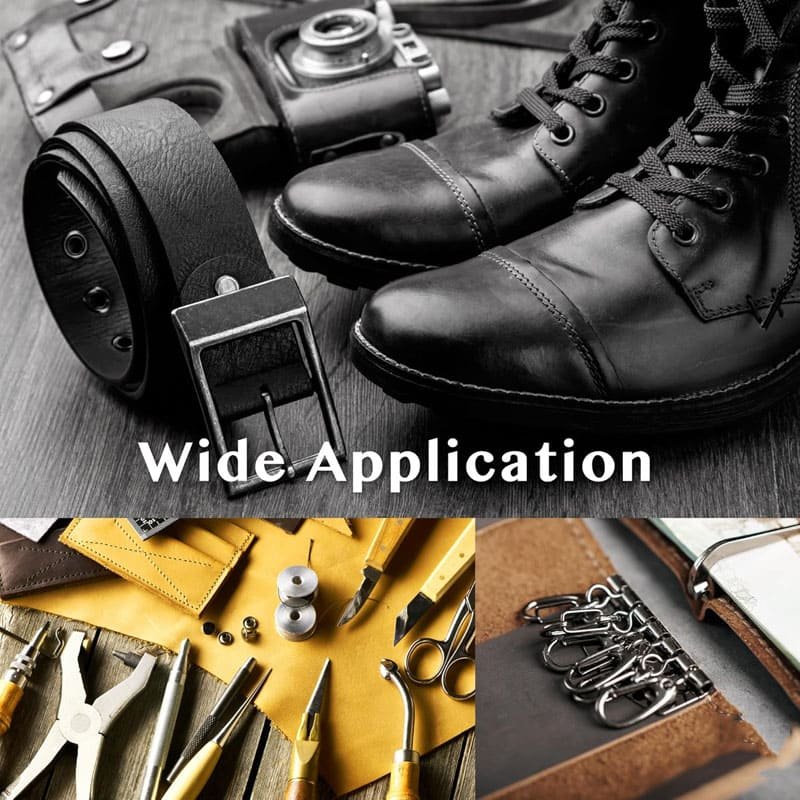
Both need gentle brushing to remove dirt and regular application of protective sprays. Nubuck’s denser grain is slightly easier to clean, while suede’s looser fibers require more careful handling to prevent permanent marks.
Everyday Care Tips
- Regular Brushing: Use a suede/nubuck brush with soft bristles or a crepe brush. A quick brush once a week can remove surface dust.
- Spot Clean Spills Quickly: Dab gently,never rub vigorously,to avoid pushing liquids deeper.
- Let Them Breathe: Storing in a cool, dry place with good airflow reduces mustiness and discoloration.
What Happens When Nubuck Gets Wet?
- Immediate Action: Gently blot with a microfiber cloth to absorb water. If you rub, you risk grinding in dirt or deforming the nap.
- Slow Air-Drying: Place the item in a well-ventilated area, away from direct heat. Rapid drying can stiffen or crack the leather.
- Post-Dry Brushing: Once fully dry, brush lightly to restore the velvety surface.
Step by Step Stain Removal for Suede & Nubuck
- Identify the Stain: Is it oil-based, water-based, or dye?
- Use the Right Tool: For minor marks, a gum eraser or suede eraser can lift the stain.
- Apply Spot Treatment: Some stains (like grease) respond well to cornstarch or talc—sprinkle, let it sit, then brush off.
- Finish with Protector: Use a protective spray once the stain is gone to guard against future mishaps.
Sample Care Routine Table
| Frequency | Task | Tools Needed | Tips |
|---|---|---|---|
| After Each Use | Light Brush & Air Out | Soft-Bristle Brush | Helps remove surface dust |
| Monthly (Approx.) | Apply Protective Spray | Nubuck/Suede Spray | Focus on high-wear areas (toe boxes, corners) |
| As Needed | Spot Cleaning for Stains | Eraser, Mild Cleaner | Always test on an inconspicuous spot first |
| Every 6–12 Months | Deeper Clean or Professional Check-Up | Professional Services | Especially for major stains or color fading |
Do You Need Special Maintenance Products or Techniques?
Yes. Specific suede or nubuck brushes, erasers, and conditioners help maintain the delicate nap. These tools clean without destroying the texture and can prevent stains from becoming permanent.
The Right Tools & Methods
1. Brushes & Erasers
- Brass Bristle or Crepe Brush: Brass bristles can lift stubborn dirt but be gentle to avoid over-scrubbing. Crepe brushes are softer for routine upkeep.
- Nubuck/Suede Erasers: Compact blocks designed to rub away minor scuffs or marks.
- Stain-Specific Solutions: Oil-based stains might need a different approach (like cornstarch or specialized cleaners) compared to water-based blemishes.
2. Conditioners & Protectants
- Nubuck Conditioners: These can keep the leather supple, but always follow the product’s instructions. Over-conditioning might darken the color.
- Water & Stain Repellents: A quick spray before you step out can shield your items from unexpected spills or rain.
- Frequency: Lightly used items might only need re-treatment every few months, whereas daily-wear shoes may benefit from a monthly spritz.
3. DIY vs Professional Cleaning
- When to Go Pro: If your item has major oil stains, deep discoloration, or you’ve tried everything and aren’t seeing results, a pro cleaner can save the day.
- Cost Considerations: Spending $15–$40 on professional cleaning might be a worthy investment for an item you spent $200–$300 on.
4. Restoring the Nap
- Light Steaming: Holding a steamer a few inches away and gently working the surface with a brush can help lift flattened fibers.
- Patch Test: Always test new techniques on a small, hidden patch to avoid irreversible damage.
Are Nubuck and Suede Worth the Investment?
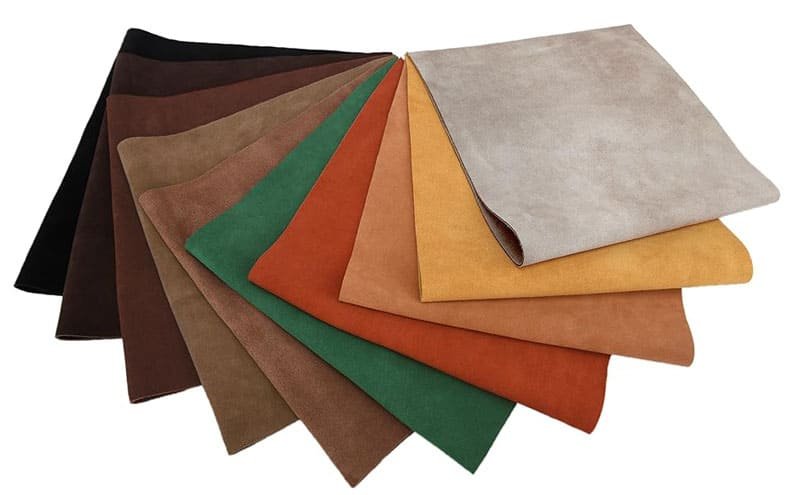
Yes, each offers its own unique charm and can last years with consistent care. Nubuck delivers premium sturdiness, while suede brings a cozy, laid-back elegance. Ultimately, it’s about matching your style, budget, and maintenance commitment.
1. Cost vs Longevity
- Nubuck: Higher initial price but often a longer lifespan if cared for well.
- Suede: Can be more affordable, although top-tier suede (like lamb suede) can rival nubuck in cost.
- Value Over Time: Spending a bit more on quality can save you money (and heartache) in the long run.
2. Style Preferences
- Refined vs. Casual: Nubuck’s sleek finish pairs well with dressier outfits, while suede leans bohemian or casually chic.
- Seasonal Suitability: Nubuck can handle cooler, slightly damp weather better than suede. Suede is ideal for dryer environments and transitional seasons.
- Color Trends: Nubuck’s pigment often appears deeper and more uniform; suede can have a subtle color shift depending on the nap’s direction.
3. When to Choose Nubuck over Suede (and Vice Versa)
- Nubuck
- You need sturdy shoes for daily wear.
- You live in a region with unpredictable weather.
- You want a more polished look and don’t mind paying extra.
- Suede
- You love that soft, fuzzy texture and casual vibe.
- You’re comfortable putting in the effort to protect it from water.
- You want variety in color and a lightweight feel for fashion pieces.
4. Custom Designs and Branding
- Logo Embossing: The tighter grain of nubuck can hold crisp embossed details, though suede’s subtlety can also look elegant with the right technique.
- Hardware Accents: Think metal buckles or decorative zippers,both nubuck and suede can handle these embellishments.
- Personalization Perks: Offering items in both nubuck and suede can broaden your audience reach,some prefer the sturdiness of nubuck, others the easy-going vibe of suede.
Getting a Customized Quote Now
Remember, leather is an investment. Show it some love, and it’ll reward you with years of beauty and service. Whether you pick nubuck for its refined durability or suede for its softer charm, you’ll be stepping out in style,and isn’t that what it’s all about?
But what if you want something truly special, like a bag or wallet with your logo, or maybe a line of shoes that reflect your brand’s style? That’s where Szoneier comes in. With decades of experience in premium leather production, we’re well-equipped to help you choose the perfect hide, finish, and design that matches your vision.
Ready to bring your ideas to life? Get in touch with Szoneier for a personalized quote and free design consultation. Our team will guide you through selecting the best leather type, color treatments, and embellishments,so you end up with products that not only look great but also stand the test of time.






